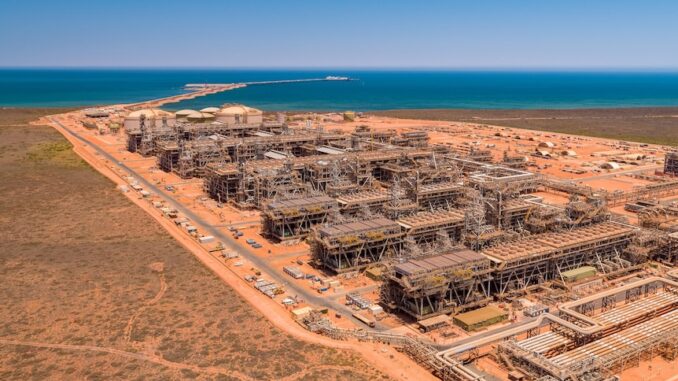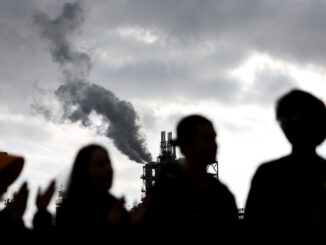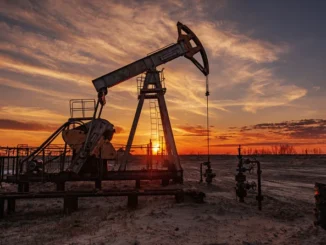
United States oil and gas giant Chevron has acknowledged its flagship carbon capture and storage project off Australia’s north-west coast is operating at just a third of its capacity as problems bedevil the facility.
The revelations come amid growing calls from the oil and gas industry for carbon capture to be used to offset emissions as part of the broader shift towards renewable energy and decarbonisation.
But David Fallon from Chevron Australia insisted the technology for carbon capture and storage (CCS) was working and the reinjection plant at the massive Gorgon gas field could be a model for others to follow.
“Gorgon CCS does work,” he said.
“It’s had it challenges, and it’s not performing where Chevron and our JV (joint venture partners) partners would like.”
United States oil and gas giant Chevron has acknowledged its flagship carbon capture and storage project off Australia’s north-west coast is operating at just a third of its capacity as problems bedevil the facility.
Speaking in Adelaide at the annual Australian Petroleum Production and Exploration Association get-together, Mr Fallon maintained that carbon capture was a proven and viable technology.
He said the problems at Gorgon, in which Chevron is sequestering carbon under Barrow Island of Western Australia’s Pilbara coast, were specific to the project rather than the broader process.
According to Mr Fallon, its issues related to a need to extract water from the reservoir in which the carbon was held.
“Its rates today are about one third where we’d like it to be.
“Even with the challenges we’ve had, it remains, as I understand it, the world’s largest stand-alone CO2 storage facility solely focused on storage.”
Renewed push to fast-track projects
The comments coincide with a renewed push by the industry to fast-track carbon capture projects across the country.
Federal Resources Minister Madeleine King on Tuesday threw her support behind industry plans to reduce its emissions via the technology, although she baulked at stumping up taxpayer funds for the task.
ExxonMobil, which is the world’s biggest privately owned oil producer with a market capitalisation of $US415 billion ($623 billion), has argued the development of a bigger hydrogen industry would depend in part on the use of carbon capture and storage.
Carbon capture a green ‘bridge’
Irtiza Sayyed, the president of Exxon’s low carbon solutions in the Asia Pacific, said hydrogen could ultimately help wean many heavy industries off coal and gas.
But he noted that developing a so-called green hydrogen industry, which used renewable energy to produce the fuel, would take many years.
Mr Sayyed said producing hydrogen from gas and burying the emissions could be a stop-gap measure.
“CCS is actually an enabler of hydrogen until such time as we’re able to cost-effectively produce green hydrogen,” he said.
“It’s a bridge, in a way.
“The way we’re thinking about this is certainly carbon capture and sequestration can support the decarbonisation of heavy industry in the near-term.
“Certainly, hydrogen as a feedstock to that industry is also the solution because today they’re burning hydrocarbons.
“And in the future, ideally, they look to burn hydrogen.”
Technology faces raft of difficulties
But analysts and critics said Chevron Australia’s troubles at Gorgon raised more questions than answers for the use of the technology.
Kathy Gao, a senior associate at Bloomberg New Energy Finance specialising in hydrogen, said carbon capture and storage faced a raft of difficulties.
For starters, Ms Gao said projects often faced long wait times before they could get approvals, while it was also difficult to capture carbon “at the point source” cost-effectively.
On top of this, Ms Gao suggested the viability or attractiveness of the technology also depended on carbon pricing to send a strong enough signal to producers.
But she said the biggest problem confronting the industry was the challenge of transporting carbon, noting that pipelines and shipping could often more than double the cost of projects.
“If you’re trying to bring, for example, a single-point source CO2 capture, which is a pretty small volume to the storage site … you basically double the cost,” Ms Gao said.
“All these factors make it really complicated and costly to do it on a large scale.”
Climate critics unconvinced
Climate Energy Finance director Tim Buckley said Chevron’s admissions were an indictment on the technology.
Mr Buckley said most of the carbon sequestration that took place across the globe was aimed at extracting more oil and gas from reservoirs.
By contrast, he noted Gorgon was one of the only projects dedicated solely to the injection of carbon underground.
He said its dismal operating performance since it opened six years ago showed the technology had little future.
“It’s meant to capture 80 per cent of the project’s emissions, and it’s run at half of that, or a third.
“This totally undermines the whole CCS push.”



